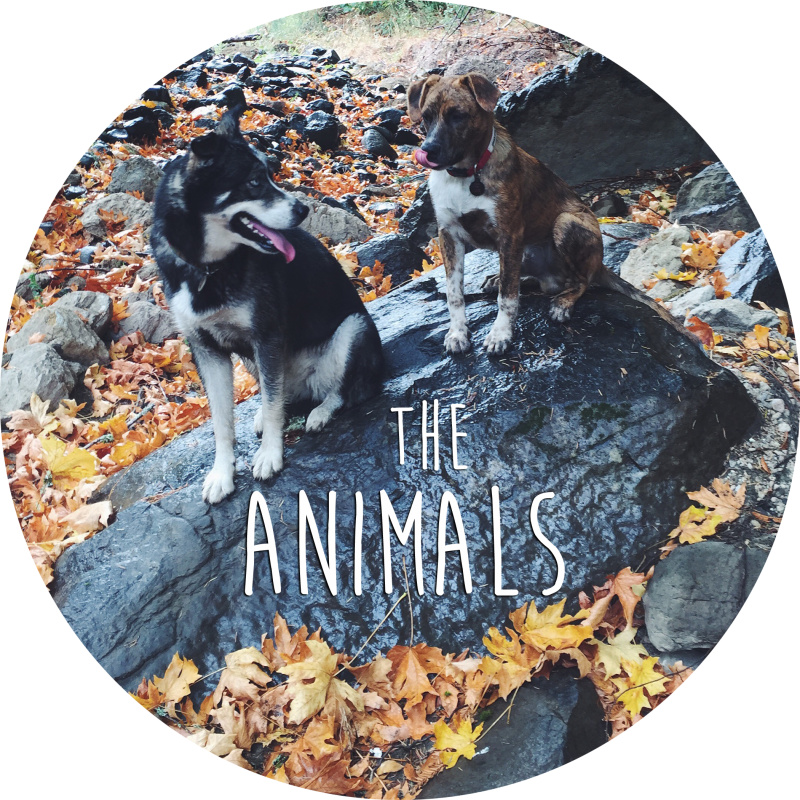Teach Your Dog Go to Station
In the positive reinforcement dog training world we are always thinking about what behaviors we would like to use to replace problem behaviors. Go to station (or go to bed, go to place, go to mat, etc) is a powerful multi-function skill that can help with tons of problem behaviors. For example — dogs that crowd you while cooking, dogs that beg at the dinner table, dogs that rush the door, jump on guests, or otherwise become overstimulated and excited.
What You'll Need:
1. A dog that understands clicker training2. A clicker
3. High value treats that your dog loves
4. A mat, bed, blanket, towel, etc to serve as the station
Training Steps:
To teach this behavior, we will be using shaping, a training technique which uses small steps to teach a new behavior without prompting or correcting. Shaping is a powerful tool that you can use to teach just about anything! You can follow the following instructions, but pay attention to your own dog and move up or down the steps according to how well they do. Remember, we are setting our dogs up for success, so keep things fun and positive. Split these instructions up so you can keep sessions nice and short (no more than 5 minutes) and end with something fun like a belly rub or some playtime. 1. Be ready to click and treat before you place the mat on the ground! You can even practice clicking and tossing treats on the mat by yourself before bringing the dog into the room to get prepared.
2. Place the mat on the ground and click and treat for any inclination towards it. This moment is crucial because most dogs will come up and give it a sniff at least, and capturing this initial movement will get you in the right direction.
3. Continue to click for interest in/movement towards the mat.
4. Once your dog is sniffing or approaching the bed each time, wait until s/he puts a paw on the mat to click and treat.
5. Next, wait for two paws to click and treat.
6. Your dog will likely make the connection and jump all the way to four paws. Once the dog is getting all the way on the mat consistently, make a big fuss and jackpot your dog in place. This may be a good ending point for a first session. If you end your session here, call your dog off the mat and remove it for the time being.
7. Next, you will wait for a sit on the mat. If you're starting a new session, you may need to warm back up to get the pup moving onto the mat consistently once more before waiting for the sit. If they show no inclination of sitting you can also cue it a few times.
8. Finally, wait for, or cue, if necessary, a down, and click and treat for your dog lying on the mat. You can treat off the mat or call your dog back to you with a fun cue like "touch" to reset them off the mat again. However be aware that the behavior of walking over to the mat and lying down is a lot more to ask of your dog, so don't overdo the reps. Koa gets very irritated with me if I make her repeat something like this too often so we keep it to five reps or less with play breaks in between.
9. If you have been cueing "down" fade your cue. Wait for the dog to go to the mat and offer the down all together. After several reps most dogs will anticipate the down — if not try a few more cues and then try again. Depending on the dog, this may take a few sessions, or may happen quickly within one session.
10. If your dog is consistently going to the mat and lying down it's time to add a cue! Common cues are: place, station, on your mat (a little wordy, but this is what we use), go to bed. Pick one and stick with it. Give the cue once your dog has finished his or her treat, but just before they go to the mat. Click and treat. Repeat this several times.
11. As you progress, give a little pause between cueing the mat behavior. You can also alternate known cues like "touch" and "mat." This will help your dog learn that they will no longer be reinforced for getting on the mat on their own, but will have to wait for the cue.
12. Once they are easily responding to the cue, you can begin increasing duration in short increments. If you have a "stay" or "wait" cue, you can use these. You can also toss yummy treats onto the mat to teach them that good things appear there! As they get comfortable staying in place for longer periods, you can give the special mat treats like stuffed Kongs or bully sticks that will help them love to relax on their mat even more.
13. Add distance. Work in very small increments (one step at a time.) Give the "go to station" cue, click and treat, take a step away from the mat, give the cue, click and treat, take an additional step back, give the cue, click and treat. You can work on this over many sessions until your dog is able to go to their mat even when you are in the other room! Remember, we are setting our dogs up for success, so if they have difficulty with a certain distance, shrink it back up until they are succeeding again, and then slowly add more distance.
And viola, you know have a great alternative to unwanted behaviors. Instead of punishing your dog or telling them "No!" for things like begging, you can give them something enjoyable to and familiar to do and you can both relax!









